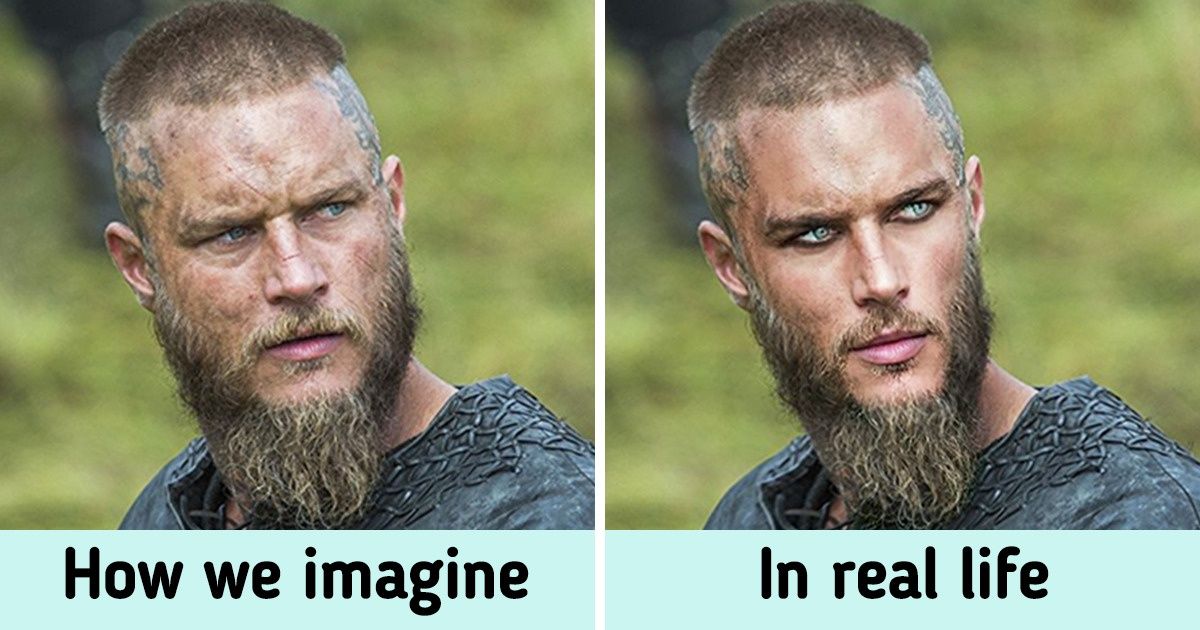“Too Bad She Couldn’t Accept Aging Gracefully,” Shania Twain, 58, Looks Shockingly Youthful in New Pic


Cult movie images stay in our minds for a long time. Moreover, if a historical character appears on the screen, viewers become sure that this is how that person looked in real life. For example, thanks to cinematography many people are sure that Vikings were true savages who didn’t bathe and who braided their hair.
We at Bright Side decided to find out what the appearance and lifestyle of Vikings was like in real life and now we are busting popular myths about these legendary people.
The first picture of Vikings wearing a helmet with horns appeared in the popular edition of the ancient Icelandic saga about Frithiof, in 1825. In fact, Scandinavian warriors rarely wore helmets. Normally, they were walking around with bare heads, and if they wore helmets, they were simple (leather or metal), with face protection. Still, they used horns separately — they used to drink from them during feasts and they used to blow into them, which was a way of communication.
Archaeologists discovered various Viking hygiene items like tweezers, combs, ear cleaners, toothpicks, and so on. The English chronicler, John of Wallingford, described them as well-groomed heartbreakers. John writes that these tough men would comb their hair every day, wash every Saturday, and change their outfits frequently. The Viking beard could be worn at any length, but it was always neat.
They also liked bright clothes with decorations. Blue and red were the most popular ones though archeologists say that Vikings’ clothes could come in any color. Also, they appreciated exclusive fabrics like silk.
Men would wear long bangs and have short hair on the back of their heads. They were actually following the fashion for hairstyles. For example, because blond guys were considered extremely attractive in Northern Europe, dark-haired Vikings would bleach their hair and even beards (in some regions) with lye.
Nutrition during those times wasn’t very good, which is why kids would grow slower than nowadays and people, in general, were not tall. The average height of a man was 5’6″, while women were on average 5’2″ tall. At the same time, physical labor made people’s bodies masculine. However, heavy loads would cause problems with joints and teeth.
The faces of men and women were very similar. Male faces were a little feminine, and female faces were a bit masculine, with pronounced jaws and brow ridges. That’s the reason why it is sometimes difficult for archaeologists to determine the gender of the Vikings from their remains.
Also, just like women, men would use a special eyeliner called kohl. It looked like powder made from crushed antimony, burnt almonds, lead, oxidized copper, ochre, ash, malachite, and chrysocolla. Not only was it considered beautiful but also helped protect eyes from the sharp sun rays reflected by the snow.
Norwegian people had 2 words — viking (a raid) and vikingr (a raider). The Anglo-Saxons had a similar word — wicing. Initially, it meant “a pirate” but over time it turned into a name to call Norse marauders. This means that not all Scandinavians were Vikings.
As a rule, it was young people striving to go in search of wealth and adventures who became Vikings. That’s why Vikings didn’t have a centralized state and they were there not just in Scandinavia. Archeologists continue finding their traces all over the world.
The only evidence of this is Scandinavian graffiti on the walls of Hagia Sophia in Istanbul, which depicts a small fleet of ships with dragon heads. The archaeological evidence is ambiguous.
The only ship presumably decorated with a dragon head was found in Denmark. It didn’t preserve entirely but the “dragon’s mane,” made of iron curls, survived. There was also a space where the head could fit.
Christopher Columbus (to the left) and Leif Erikson (to the right)
The Vikings have indeed become famous for some brutal raids on other peoples. One of the most famous examples was when they raided the monks from the island of Lindisfarne in the north of England, destroyed their famous library, and took all of their treasures.
Still, most expeditions were related to trade. Moreover, Nordic warriors were travelers and explorers. Not only did they go to Europe but also to Russia, Central Asia, and some regions in Africa.
Also, archaeologists found traces of Scandinavians in North America. The sailor, Leif Erikson, could be the first European who came to the New World. This lets us assume that America had been discovered in the 11th century, long before Christopher Columbus.
In the second half of the 20th century, well-preserved Viking houses, their clothes, jewelry, and so on were found in the ground during archaeological excavations that were carried out for several years in the Coppergate area of the English city of York. Since that time, scientists have changed their idea about these people and started to consider them as domestic, family people.
Do you like how Vikings are depicted in movies? What myths from this article did you use to believe in and which ones always seemed suspicious to you?











